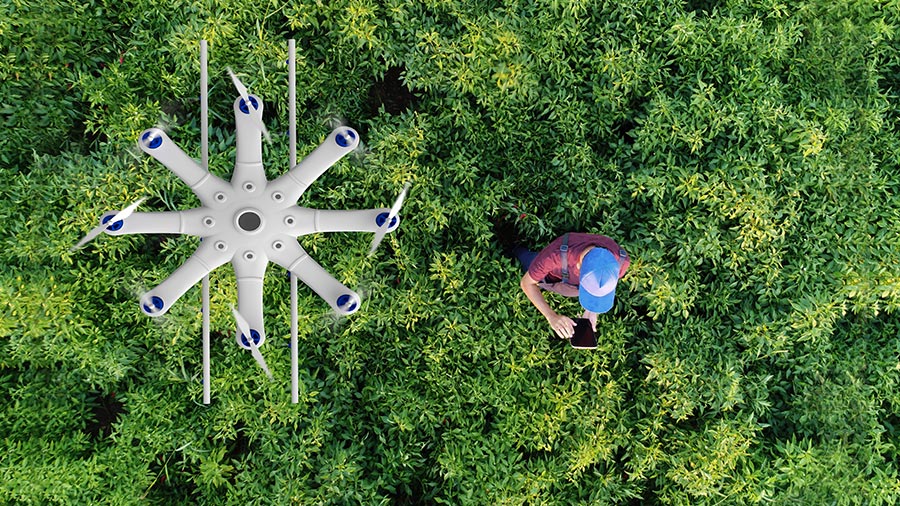Welcome to the e-farm
What will we eat tomorrow? In 2050, 9.8 billion people will ask themselves this question. This means that food production must be increased by 70 percent worldwide by then. How is that possible? One solution is called smart farming. Harvests can be increased by two-thirds by using resources efficiently. This megatrend offers investors interesting possibilities.

In addition to productivity, profitability must also be increased in the future since cropland cannot be expanded anymore and may decrease because of climate change. Water resources are also dwindling. On top of this, there are other challenges such as a continuing shortage of workers, increasing price pressure, and stronger competition. In summary, smart farming can help get the most out of the ground.
The challenges
- The world population is expected to be 9.7 billion people by 2050, and the demand for food will increase by 70 percent
- A shortage of workers in agriculture, high price pressure, strong competition
- A changing climate, less and less farmland, and a shortage of water
The oldest area of the economy is going digital: Smart farming
Drones measure cropland and spray pesticides, autonomous tractors plow fields, field robots remove weeds, and animal sensors send information about cows’ eating habits: Farms in the future will look different than what we are used to—they will become completely digital. Optimized work processes save time, conserve valuable resources such as water and energy, and prevent over fertilization and excessive use of pesticides and herbicides.
The smartest farmer has the biggest potatoes
Harvests can also be increased even more by using biologicals in combination with these clever helpers. Biologicals are biological pesticides from naturally occurring microorganisms and plant extracts (e.g. fungi and bacteria). They are used in a targeted way as fertilizer to improve nutrient uptake from the soil and to control pests. The productivity increase from these measures is really necessary. Not only is the need for food increasing due to the rapidly growing world population, but price pressure is also increasing. At the same time, consumers are increasingly desiring untreated, natural food.
Vertical farming: Vegetable farming high in the sky
Vertical agriculture is already being used in Japan and other Asian countries. Food is grown on the front of houses or on several terrace levels or flat roofs in densely settled city centers. This modern farming method uses extremely little space. Expensive transportation is unnecessary because the food is grown in close proximity to consumers.
The world population will grow and need more food every year. We can be sure of that. It is also just as sure that this food must be grown and produced. This is where smart farming comes into play with various methods that have a promising future to get the maximum from available ground with limited space and limited resources. This is why we see worldwide growth potential in the medium to long term in the area of smart farming.
